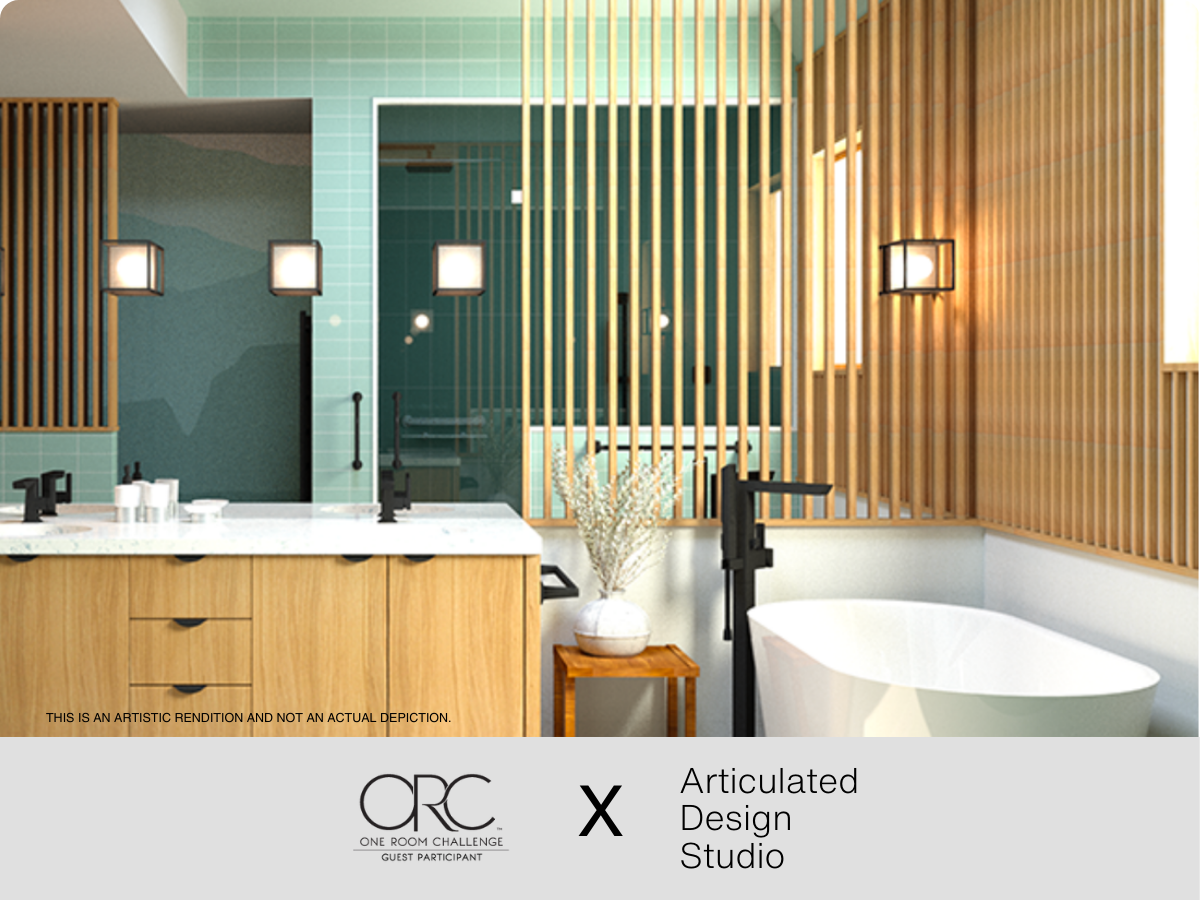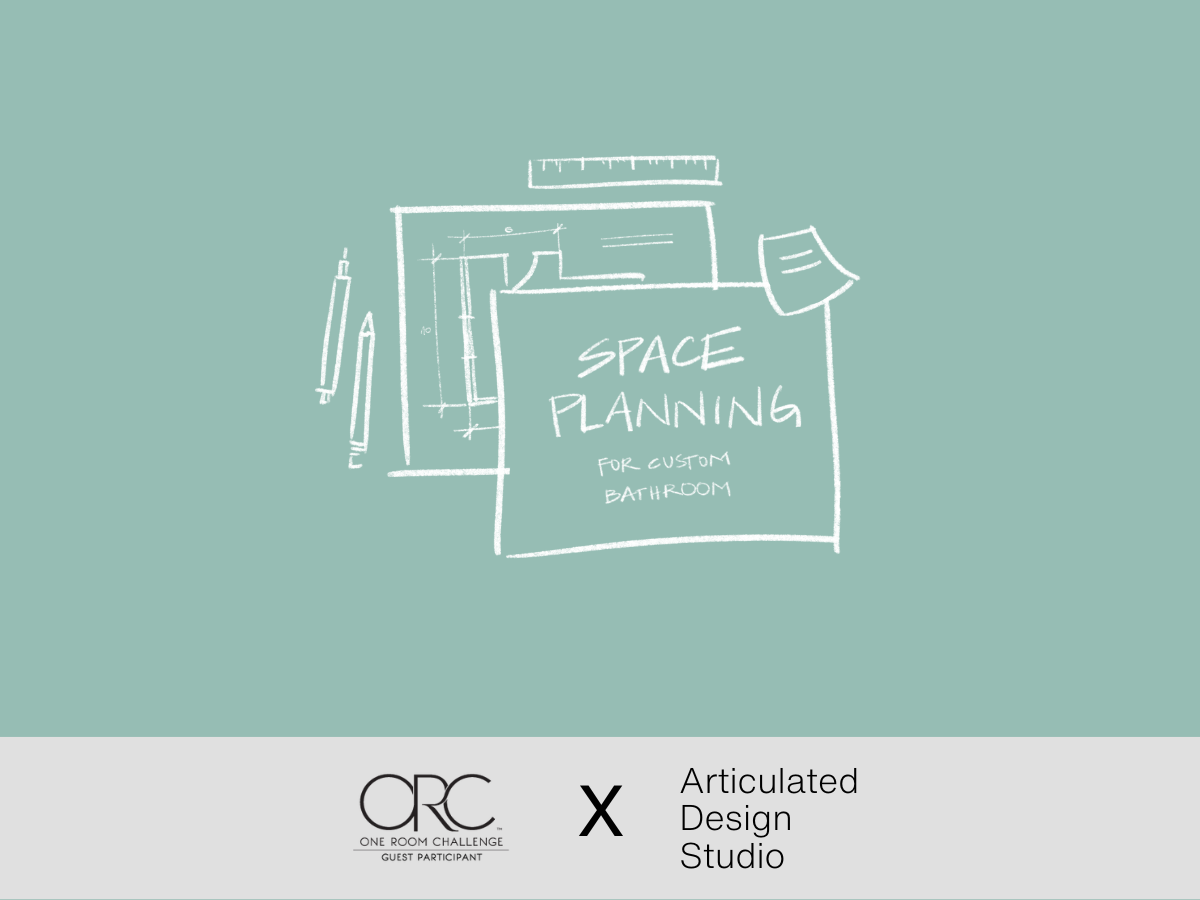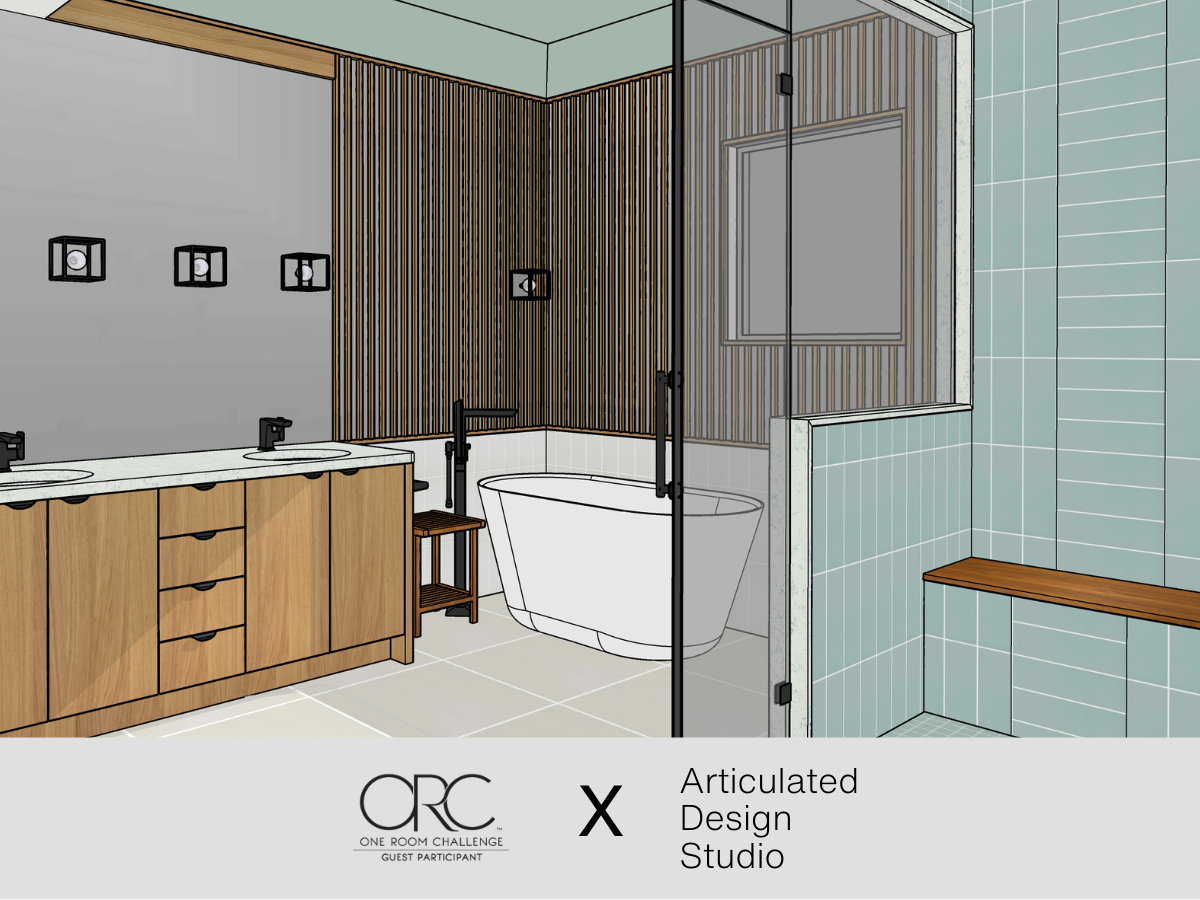One Room Challenge: Week 04: Integrate Existing Furnishings
In the beginning of the Spring, we launched a sneak peak into a furnishing & styling project for Articulated’s home workspace and our dining room as a One Room Challenge. You receive the inside scoop on a design project for our dining room and living room flip as well as follow along with our design process. The steps in our design process are always at play, especially when it is for ourselves because there are way more twists and turns to navigate (with creatives who change their mind and know all the options!)
Like everyone else at the beginning of the COVID-19 global pandemic, we shifted our studio practice to home - more specifically, to our dining room. We had previously started re-designing and decorating some of the rooms in our 112 year old home and had to make it work in the meantime. Although we don’t know when we will return to an office (we let our lease go in March 2020 and the economic impacts need more time to revisit and recover), we are very ready to implement the changes for our home office space. This weeks’ post is the fourth of eight weekly posts following the One Room Challenge timeline with a final project reveal, and one bonus article. So enjoy a peak in our space and the process of starting a project with us.
Documenting Existing Furnishings
An important part of the interior design process is to identify any existing furnishings that the Client may want to integrate or repurpose in the newly designed space. We do not expect a Client working with us to purchase all new pieces. Although it may end up that way at times, we do not start with that intention.
The elements we need to identify, in a documented list, are photographs of the piece (all sides are preferred), the overall size, the finish materials, and any repairs or conservation efforts that need to be taken before re-introducing the piece to the space. This can often be completed with a photograph and a markup of the sizes on the image. At times we need to use a more extensive process that digs deeper into the provenance and ownership documents in conjunction with careful conservatorship (This would result in a document they can use for insurance purposes and family records). Yet, this is something that we urge all Clients provide their design professional because we do not live in your home or work in your space.
For an Existing Furnishings Form to use on your next project, we’ve included a free resource for all readers below:
Heirlooms, Family & Telling Your Story
I often remark that objects have a hidden language inside of them and it is our role as conservators of those objects to share their secrets, or (in the case of heirlooms) to share their memory. We all have objects that have been treasured and passed down to us from a previous generation. Far too often we become wrapped up in the perfect vision of what we saw on television or in a magazine and believing that in order to achieve that we must purchase brand new.
During our design process, we assess the piece(s) we want to integrate into the vision and concept. We want our Clients to be able to tell their story, interests, and history by showcasing a collection or treasured item. Yet, we do not live in a museum and we can not protect every usable heirloom from wear and tear. For example, as a glass collector, I am often asked about my hand-blown goblets that I bring out and use when the occasion suits it. The most common question I am asked is “What happens if they break?” It’s a fair question, but I find that my best retort is “Then they died happy, as opposed to being covered in dust.”
HONOURING MEMORY from andrew’s past
I am celebrating a member of my chosen family, Sidney R. Stern, who passed away this week 3 years ago. He moved to Western Canada from Boston, MA (USA) like “Hannibal crossing the Alps” he would often proclaim, and with that he transported at least 2 households of furniture. Some of which he had in storage for many years, and we had to downsize it when he moved to Arizona. Before I met him, Sidney had a rich history with the Human Rights Campaign (HRC) Chapter of Boston, attending & hosting mixers for the local Federal Club because LGBTQIA+ rights were a significant part of who he was.
In his South End brownstone on Appleton Street in Boston, he had (4) Jacobean Revival dining chairs paired with a new Saarinen round dining table. The neighbourhood was known for drag queens, assorted riff-raff, and brothels. I recall sorting through his papers and reading a note from his parents banker who was questioning his brownstone purchase and refusing to service the transaction. The purchase ultimately went through and Sidney was a vital part of the neighbourhoods’ revival. In the early 1980’s, he started collecting some stunning early glass works by artists Paul Seide, Harvey Littleton, and Dale Chihuly. After relocating to Vancouver, BC, he and I advocated on the board of the BC Glass Arts Association for over 6 years.
ON TO THE DINING CHAIRS
The (4) Jacobean Revival dining chairs were a part of Sidney’s life as an out, gay male during Harvey Milk’s famous declaration in 1978 “Come out come out wherever you are!” This mobilized the marginalised American LGBTQIA+ population into a group of out and proud individuals advocating for their civil rights. This contrasts in comparison to the Charter of Rights and Freedoms in Canada (1985) which added Section 15 in 1995. I can only image the wine that was spilled, the foie gras that was consumed, and the conversations that were had about the civil rights movements around the dining table while sitting on these dining chairs. It is an important part of history, predecessors like Sidney made it possible for us to be free of social persecution and stigma. I want to be able to sit around our dining table, while sitting on these same dining chairs, debating new topics, having in-depth conversations, and sharing a meal with our family and friends - just like my fondest memories of Sidney.


Integrating Our Existing Furnishings
Our design style for this space is juxtaposition of modern with old, much like a Parisian apartment. These 4 dining chairs mix with our art collection and library to make a combination dining room and workspace (yes, this is where all the designer magic happens.) As the oldest, most dominant items in the space (possibly 1820’s), everyday we can appreciate their beauty and function. Funnily enough, the whole colour concept for the room began with the Vasarely serigraph print that you see in these pictures. We can our coordinate the bookcase into blocks of colour, much like the graphic print.
Happy coincidences aside, the colour we are injecting into our workspace reminds us daily of the Pride and Trans Flags that have been cornerstones of the path paved before us.









